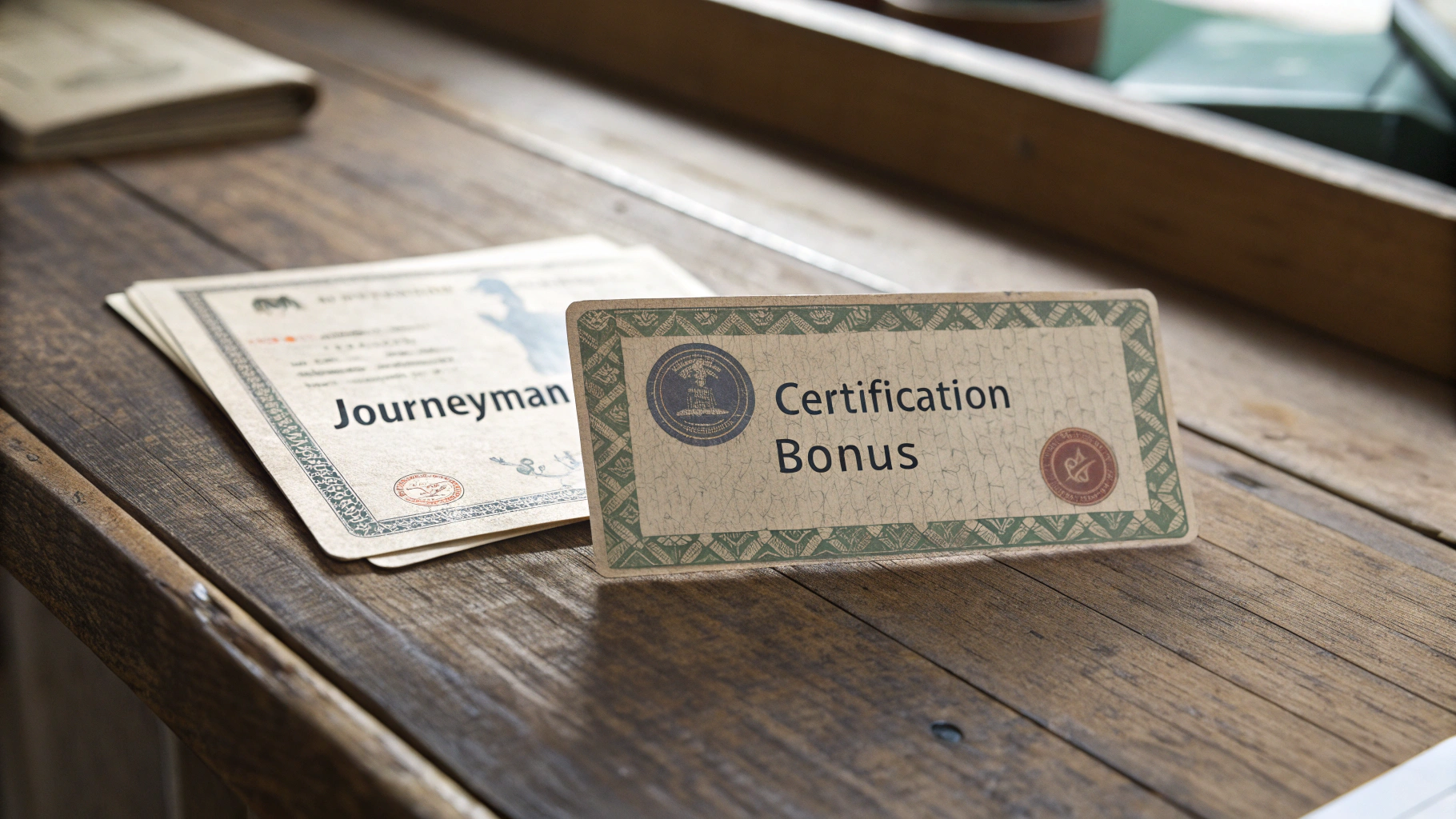
A journeyman card does more than prove your skills, it can completely change your career trajectory. Essentially, this certification tells employers you're competent and reliable, which opens doors to better pay, leadership opportunities, and more job security in fields like electrical work, plumbing, and carpentry. With the huge demand for skilled workers right now, holding this credential shows you can handle complex projects independently. Take Luis Martinez, an electrician from Chicago who doubled his income within a year of earning his card. Stories like his aren’t unique, and they highlight why this certification matters.

A journeyman card certifies that a tradesperson has mastered their craft through hands-on experience and formal training. Unlike an apprentice who works under supervision, a journeyman can tackle jobs solo, mentor newcomers, and even manage teams.
The path to earning one varies by trade and location. For example, electricians typically need 8,000 hours of on-the-job training (about four years) paired with 576 classroom hours 1. Unions like the United Steelworkers offer a "10-Year Card" for members with a decade of verified experience 2, while states like Wyoming accept technical school credits toward certification 3.

Journeyman status often means a 20–50% pay increase. While the average electrician earns $63,000 annually, those in high-cost regions like Sacramento can make $100,000+ with overtime and benefits factored in 4. Local 520 plumber Jenna Carter saw her hourly wage jump from $18 to $42 after certification. This was a change that she credits to her card’s negotiating power.
With this credential, you’re no longer "just an apprentice." You can bid for contracts, train newcomers, and oversee projects without a master’s supervision. In Washington State, journey-level workers install solar panels and industrial systems that apprentices can’t touch 5.

Think of the journeyman card as a stepping stone. After logging 4,000+ additional hours, many tradespeople qualify for master exams. Master electrician Diego Ramos used this pathway to launch his Phoenix-based contracting firm, which now employs 12 journey-level workers.
Employers prioritize certified hires. Unions like the IBEW negotiate stronger benefits for cardholders, and 78% of contractors say they’d choose a journeyman over an uncertified worker for critical roles 6.
While requirements differ, states like California accept some out-of-state licenses through reciprocity agreements. Former Texas electrician Sofia Nguyen relocated to San Diego by providing proof of her 8,000 hours and passing California’s NEC-based exam 7.

Licensing rules vary widely:
Always verify local rules. Michigan HVAC technician Amir Khan learned this the hard way when his Florida license wasn’t recognized, forcing him to retake courses.

Apprenticeships through unions or trade schools streamline training. Use apps like HourTracker to document tasks and avoid gaps.
Journeyman tests cover trade-specific codes like the National Electrical Code (NEC). Isaac Thompson, a Denver electrician, passed on his first try using Mike Holt’s study guides and a 12-week prep course 11.
Some states require employer-signed verification. Wisconsin plumber Emma Li had her foreman confirm her 8,000 hours before submitting paperwork.

Rarely. Most states prioritize hands-on experience, though a few accept engineering degrees paired with fieldwork 1.
Most see pay bumps immediately. IBEW members report a $12+/hour increase post-certification 13.
Check reciprocity rules. California and Oregon recognize some licenses, while Texas and Florida often require retesting 7.

A journeyman card is more than just a certificate, it’s proof you’ve earned your place in the trades. And the benefits are real, better pay, opportunities to lead teams, and real job security. If you start tracking your hours today, you could be the certified pro others aspire to become in just a few years.

